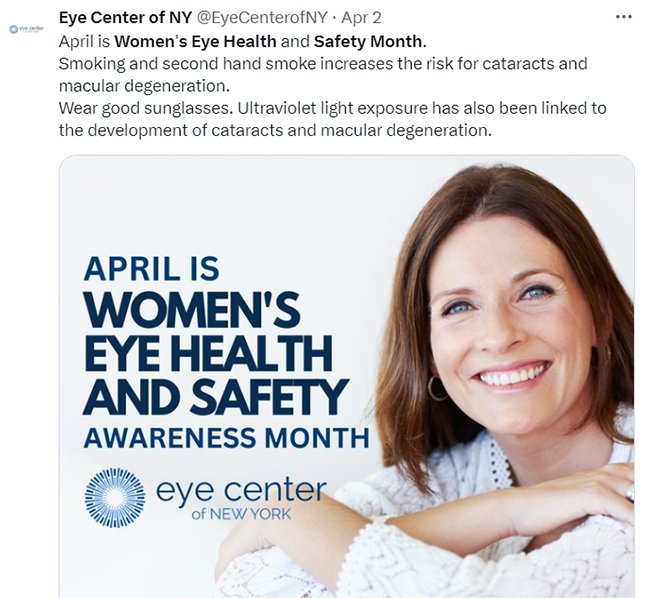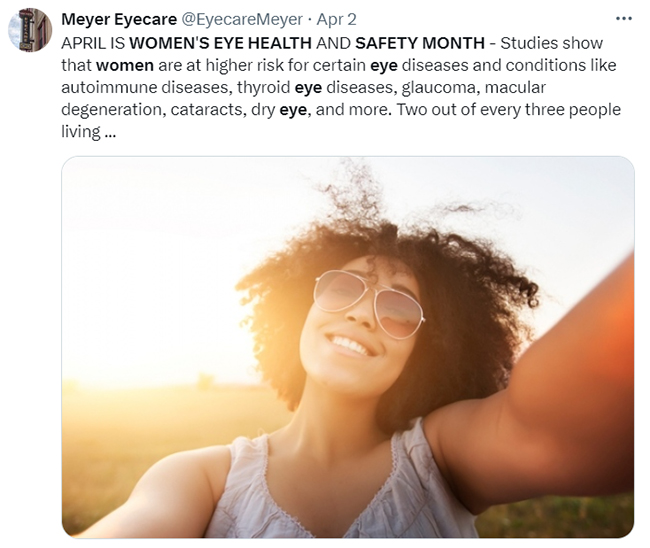
The Eye Center of New York reminds women that smoking and second-hand smoke increases the risks for cataracts and macular degeneration. Image via @EyeCenterofNY on X
|
| 
Meyer Eyecare reminds women that studies show they are at higher risk for certain eye diseases and conditions like autoimmune diseases, thyroid eye diseases, glaucoma, macular degeneration, cataracts, dry eye, and more. Image via @EyecareMeyer on X
|